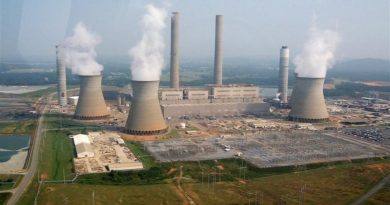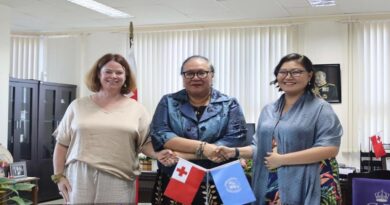Governments meet to consider high-ambition GEF replenishment
Representatives of the GEF’s member governments gathered virtually Sept. 29 – Oct. 1, 2021, to review proposed plans for the multilateral trust fund in its eighth funding cycle. Donor support for the GEF helps developing countries meet international environmental obligations and advance progress toward global goals on biodiversity, climate change, harmful chemicals, and more.
The Global Environment Facility is ready to “meet the moment” and scale up international action on biodiversity loss, climate change, toxic waste, and related threats, the head of the multilateral trust fund told its donor and recipient countries as they held their second formal discussions in preparation for the GEF-8 funding cycle.
Addressing representatives of the GEF’s 184 member governments, CEO and Chairperson Carlos Manuel Rodriguez made the case for an ambitious eighth replenishment that would match the goals of upcoming international environmental negotiations, and dial back imminent risks to the world’s forests, landscapes, oceans, rivers, and remaining wild spaces.
“The GEF is prepared to help deliver the political ambition that is emerging from your countries in the upcoming negotiations on biodiversity, chemicals, and climate change,” Rodriguez told the gathering, held virtually because of the ongoing pandemic, which also included observers from civil society and the GEF’s agency partners.
The GEF-8 investment period, which will span from July 2022 to June 2026, aligns with a crucial time for the world to recover sustainably from COVID-19, tackle the root causes of interlinked challenges to nature and human health, and make large strides toward the 2030 goals.
“Being bold and ambitious in what we aim for in GEF-8 is about impact – it is about results – on the ground and in the water,” Rodriguez said. “Our role is to provide donor countries with great opportunities to make an impact, and to provide recipient countries with great outcomes through well-designed projects that can be scaled. This is what our programming plans can help us achieve together.”
The replenishment planning meetings were co-hosted by the World Bank, which is one of the GEF’s 18 partner agencies as well as its trustee, with responsibility for the mobilization of resources for the trust fund every four years.
World Bank Vice President of Development Finance Akihiko Nishio said the discussions were happening at a moment where it was clear that the world needed to shift from established patterns contributing to environmental harm.
“GEF-8 comes at a challenging time with unprecedented environmental challenges ahead of us. Now more than ever, business as usual will not work,” Nishio said. “We have an opportunity with this replenishment process for the GEF to take bold, decisive action, and enable developing countries to tackle the world’s considerable environmental threats in a way that generates benefits beyond national borders.”
The GEF was created 30 years ago to enable developing countries to address priorities such as deforestation, desertification, climate change, biodiversity loss, and ozone depletion. Since then, it has broadened its scope to address the root causes of environmental challenges, many of which continue to worsen due to unsustainable consumption and production patterns.
In its most recent funding period, the GEF has provided about $1 billion a year for projects managed by 18 partner agencies alongside national governments. Rodriguez said that meeting the goals of the Convention on Biological Diversity, the UN Framework Convention on Climate Change, the UN Convention to Combat Desertification, the Minamata Convention on Mercury, the Stockholm Convention on Persistent Organic Pollutants, and initiatives related to oceans, plastics, and more, would require additional funding commitments as well as the political will that has been demonstrated in many capitals over the past several years.
Representatives from both donor and recipient countries expressed support in the meeting for the GEF’s integrated approach to addressing environmental challenges, which means that each dollar invested has an impact in not only one focal area but across multiple priorities.
This was also reflected in a report from the GEF Independent Evaluation Office on GEF-7 performance.
IEO Director Juha Uitto described the GEF as a relevant, reliable, predictable source of environmental finance for countries who need the funding to deliver on their ambitions, with both local and global benefits. He also noted the GEF’s flexibility to work across focal areas, the depth of its environmental knowledge, and its relationships with governments as distinguishing features.
The proposed work program for GEF-8 includes continued efforts to tackle climate change, biodiversity loss, land degradation, chemicals and waste, and other environmental threats through integrated programs as well as focal area-specific support. It also includes an expansion of efforts to address plastic pollution, support a circular economy, and sustainably manage international waters, including areas of the ocean beyond national jurisdiction – equivalent to the size of Africa.
On the meeting’s third and final day, Nishio thanked the participants for their valuable inputs and guidance on the proposed programming, policy, and financial scenarios for GEF-8, which will continue to be discussed and refined over the coming months.
“Thank you all for the excellent discussion and constructive feedback,” Nishio told the delegates from around the world. “The GEF Secretariat team has taken note of your useful guidance and observations and will incorporate them as it refines the next iteration of the GEF-8 policy directions agenda.”
Rodriguez, a former environment and energy minister in Costa Rica, concluded the discussions by stressing the need for a wide scope when addressing broad and far-reaching challenges, particularly as countries seek to transform their economies in support of blue, green, and sustainable growth.
“We have 30 years of playing the role of connector, advisor, and reliable, trusted partner as developing countries like mine have sought to prioritize environmental action. Turning intentions into reality is not easy but we have done it, and we are looking forward to doing more of it in partnership with you,” he said. “Our integrated approach to addressing drivers of environmental problems means the whole of our work program is larger than the sum of its parts. This multiplier effect is what we are all about.”
Member governments and representatives of the GEF’s community of partners will meet again for further discussions about the trust fund’s replenishment over the coming months, with the next formal meeting planned for early February. A pledging meeting is scheduled to take place in April with a final decision about the size and ambition of the GEF-8 funding envelope is expected to be taken by the end of GEF-7, in June.




